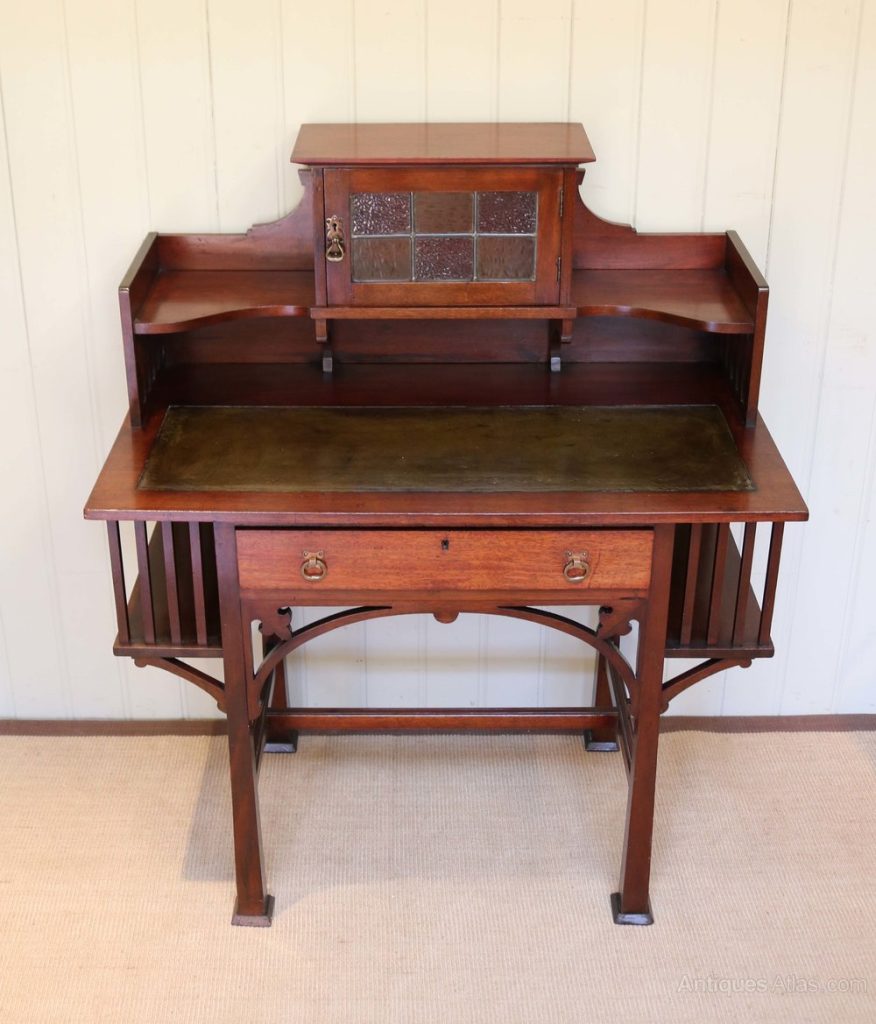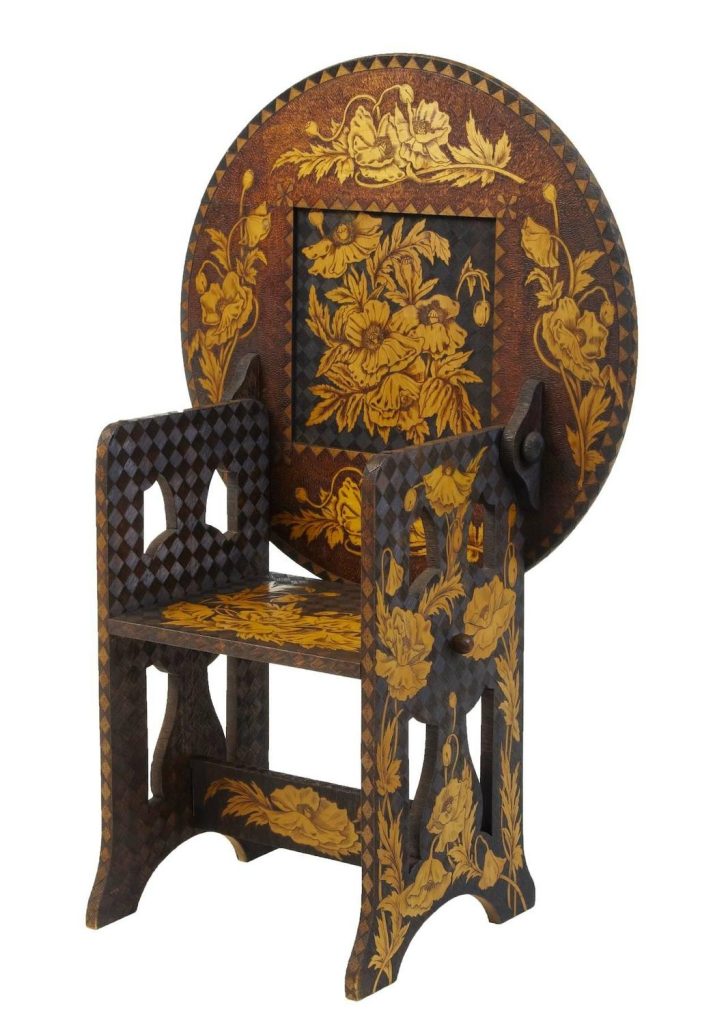I. Intro
The Arts and Crafts furniture style emerged in the late 19th and early 20th centuries as a response to the industrialization and mass production of furniture. It emphasized the importance of craftsmanship, natural materials, and functional designs. In this article, we will delve into the key characteristics of Arts and Crafts furniture, explore influential figures and movements, examine popular types of furniture within the style, discuss modern interpretations, and highlight the contemporary relevance of this timeless aesthetic.

II. Key characteristics of Arts and Crafts furniture
The Arts and Crafts furniture style is characterized by several distinct features that set it apart from other design movements of its time.
A. Emphasis on craftsmanship and handmade quality
When it comes to Arts and Crafts furniture, one cannot overlook the defining characteristic of expert craftsmanship and the immense value placed on handmade pieces. Craftsmen of this movement took great pride in their work, dedicating themselves to honing their skills and creating furniture that stood the test of time.
Employing traditional joinery techniques, such as mortise and tenon joints and dovetails, craftsmen showcased their mastery and attention to detail. Each piece was meticulously crafted, with careful consideration given to every aspect, from the selection of materials to the final finishing touches. The result was furniture that exuded a sense of quality, durability, and beauty.
Craftsmen working in the Arts and Crafts style understood that their creations were not mere objects, but rather expressions of their passion and artistry. They believed that furniture should be more than just functional; it should be an aesthetic delight that enhanced the overall ambiance of a space. This dedication to craftsmanship elevated Arts and Crafts furniture to a level of excellence that has stood the test of time. Today, these meticulously crafted pieces continue to be cherished and sought after for their enduring beauty and exceptional quality.
B. Use of natural materials and simple, functional designs
At the heart of the Arts and Crafts furniture style lies a deep appreciation for the inherent beauty of natural materials. Oak, mahogany, and other sturdy hardwoods were commonly chosen for their rich tones, intricate grain patterns, and durability. Craftspeople recognized that these materials possessed a unique warmth and character that could not be replicated by synthetic alternatives.

The designs of Arts and Crafts furniture adhered to a philosophy of simplicity and understated elegance. Rather than relying on excessive ornamentation or elaborate detailing, the focus was on creating functional and practical pieces that showcased the natural beauty of the materials. Clean lines and unadorned surfaces allowed the wood’s texture and grain to take center stage, providing a visually pleasing and tactile experience.
III. Influential figures and movements in Arts and Crafts furniture
Several influential figures and movements shaped the development and popularity of the Arts and Crafts furniture style.
A. William Morris and the British Arts and Crafts movement
William Morris was a key figure in the British Arts and Crafts movement. He believed in the importance of handmade craftsmanship and sought to revive traditional techniques and craftsmanship in furniture making. Morris’s designs emphasized simplicity, incorporating intricate hand-carved details and richly patterned fabrics.
B. Gustav Stickley and the American Craftsman style
Gustav Stickley played a significant role in popularizing the Arts and Crafts style in America, known as the American Craftsman style. His furniture designs were characterized by their solid construction, straight lines, and exposed joinery. Stickley’s furniture featured functional elements such as built-in storage and clean, unadorned surfaces.

IV. Popular types of Arts and Crafts furniture
Within the Arts and Crafts furniture style, several types of furniture became particularly popular.
A. Mission-style furniture
Mission-style furniture is a beloved subset of the Arts and Crafts furniture style, renowned for its simplicity, practicality, and enduring appeal. The hallmark of this style is its clean lines, sturdy construction, and minimal ornamentation. Mission-style chairs, tables, and cabinets commonly feature slatted elements and flat panels, reflecting a focus on functionality and the beauty of natural materials.
Gustav Stickley, a key figure in the promotion of the Arts and Crafts movement in America, played a significant role in popularizing Mission-style furniture. His Craftsman workshops produced furniture that epitomized the principles of the style. Stickley’s designs showcased the inherent strength and beauty of solid wood through their robust construction and simple yet elegant forms. Slatted chair backs and tabletops, along with flat paneled cabinets, became synonymous with Mission-style furniture.
B. Stickley furniture
Stickley furniture holds a prominent place within the world of Arts and Crafts furniture, referring specifically to the pieces crafted by Gustav Stickley and his brothers. What sets Stickley furniture apart is its exceptional quality, with a focus on strong, solid construction and meticulous attention to detail.

Gustav Stickley’s designs were a true embodiment of the principles of the Arts and Crafts movement. His furniture showcased the inherent beauty and strength of the materials used. Exposed joinery became a trademark of Stickley furniture, as it accentuated the craftsmanship and integrity of each piece.
C. Greene and Greene furniture
Greene and Greene furniture is renowned for its intricate craftsmanship and unique design elements. The Greene brothers, Charles and Henry, were influential architects and furniture designers in California. Their work featured exquisite joinery, hand-carved details, and an emphasis on organic forms. Greene and Greene furniture is often associated with the iconic Gamble House in Pasadena.
V. Modern interpretations and contemporary relevance of Arts and Crafts furniture
The Arts and Crafts furniture style continues to inspire designers and enthusiasts alike, with modern interpretations and contemporary relevance.
A. Revival of interest in the style
In recent years, there has been a renewed interest in the Arts and Crafts furniture style. Collectors and enthusiasts appreciate its timeless appeal, craftsmanship, and connection to the natural world. Many seek out original pieces from the Arts and Crafts era, while others embrace modern reproductions that capture the essence of the style.

B. Incorporating Arts and Crafts elements in contemporary designs
Contemporary furniture designers often incorporate Arts and Crafts elements into their creations. They draw inspiration from the emphasis on craftsmanship, natural materials, and functional designs. Modern interpretations may feature clean lines, simple forms, and a focus on sustainability. By blending traditional Arts and Crafts principles with contemporary sensibilities, designers create furniture that resonates with a wide range of individuals.
VI. Conclusion
The Arts and Crafts furniture style remains a testament to the enduring value of craftsmanship and natural materials. Its emphasis on handcrafted quality, functional designs, and the beauty of hardwoods continues to captivate furniture enthusiasts. Whether through original pieces from the Arts and Crafts era or modern interpretations, the timeless elegance and enduring relevance of the style continue to inspire and influence the world of furniture design.


